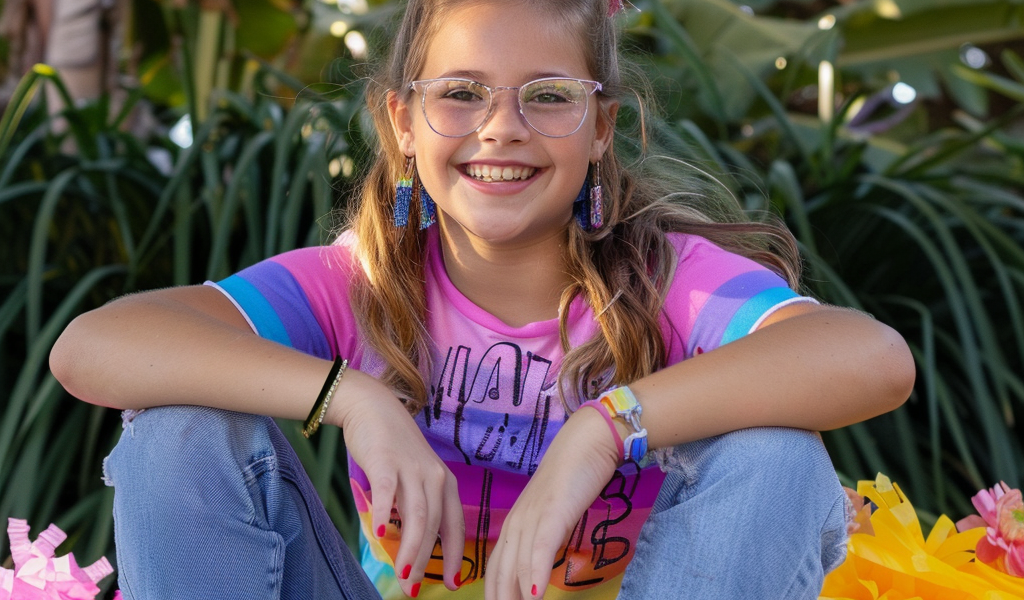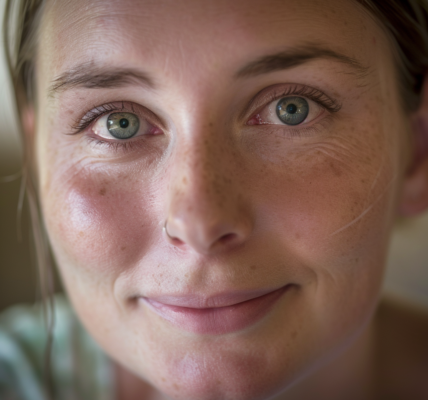Myopia, commonly known as nearsightedness, is increasingly becoming a significant concern among children and their families. With the recent emphasis on myopia management by the College of Optometrists, it is essential to understand the journey of families navigating this condition. One such story revolves around Maddy, a 12-year-old girl who exemplifies the challenges and triumphs faced by young myopes.
Maddy is the youngest sibling in a family of three and is not just a myope; she is also a dancer, a TikTok content creator, and a cheerleader. Despite having two myopic parents, Maddy’s older siblings have managed to avoid the condition, making her diagnosis at the age of eight a surprise for her family. The realization came when her mother shared a photo of Maddy excitedly wearing her brand-new spectacles. However, this excitement was tinged with concern, as her aunt, an optometrist, recognized the implications of myopia at such a young age.
Initially prescribed single vision spectacles, Maddy’s family did not have a conversation about myopia management, a topic that was not emphasized in the guidance provided by the College of Optometrists at that time. The lack of a robust evidence base for large-scale myopia control meant that many practitioners were not actively engaging in discussions about management strategies, leaving families like Maddy’s unaware of the potential risks associated with myopia progression.
As an optometrist, Maddy’s aunt felt compelled to educate her sister about the importance of myopia management, especially given the red flags surrounding Maddy’s diagnosis. Research indicates that children diagnosed with myopia at a younger age are more likely to develop high myopia, which can lead to severe vision complications later in life. Maddy’s journey had already begun, and the prospect of her myopia worsening over the next decade was alarming.
In January 2020, just three months after her initial diagnosis, Maddy had an appointment with a different optometrist in St Albans, located about a 40-minute drive from her home. By this time, the novelty of wearing spectacles had faded, and the family was struggling to balance appointments with their busy lives, which included three children and multiple pets. During this visit, Maddy was fitted with MiSight 1 day contact lenses, a significant step in her myopia management journey. With supervision, she quickly learned to apply and remove her lenses, marking a positive turn in her experience.
However, the onset of the pandemic brought unprecedented challenges. With schools transitioning to virtual learning and extracurricular activities halted, Maddy’s routine was disrupted. The benefits of wearing contact lenses, which allowed her to engage in various activities with ease, were diminished. The lack of physical engagement and social interaction during lockdowns took a toll on Maddy’s overall well-being and her myopia management.
As the world began to open up again, Maddy’s family faced the task of reintegrating her into a more active lifestyle while managing her myopia. Regular check-ups and consistent communication with eye care professionals became crucial in ensuring that Maddy’s condition was monitored effectively. The importance of early intervention and ongoing management in myopia care cannot be overstated, as it plays a vital role in preventing the progression of the condition.
Through Maddy’s story, it becomes clear that myopia management is not just about prescriptions and lenses; it is about understanding the broader implications of the condition and how it affects a child’s life. Families must be equipped with knowledge and resources to navigate the complexities of myopia management, ensuring that their children can lead active, fulfilling lives while managing their vision health.
As we continue to explore the implications of myopia in children, it is essential to advocate for comprehensive myopia management strategies that encompass education, regular monitoring, and personalized care. The journey of families like Maddy’s highlights the need for a collaborative approach between practitioners and families to effectively manage myopia and mitigate its long-term effects.





